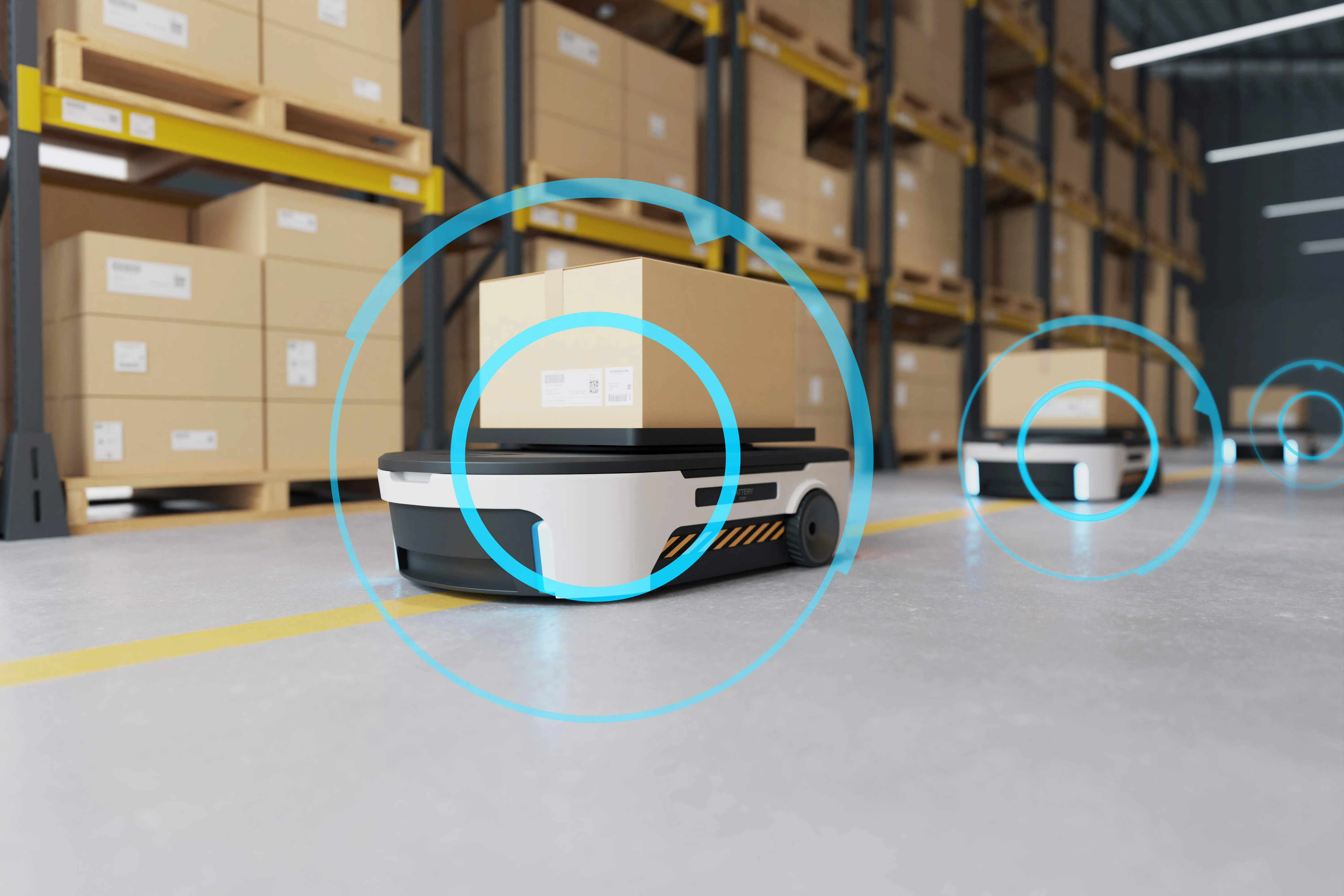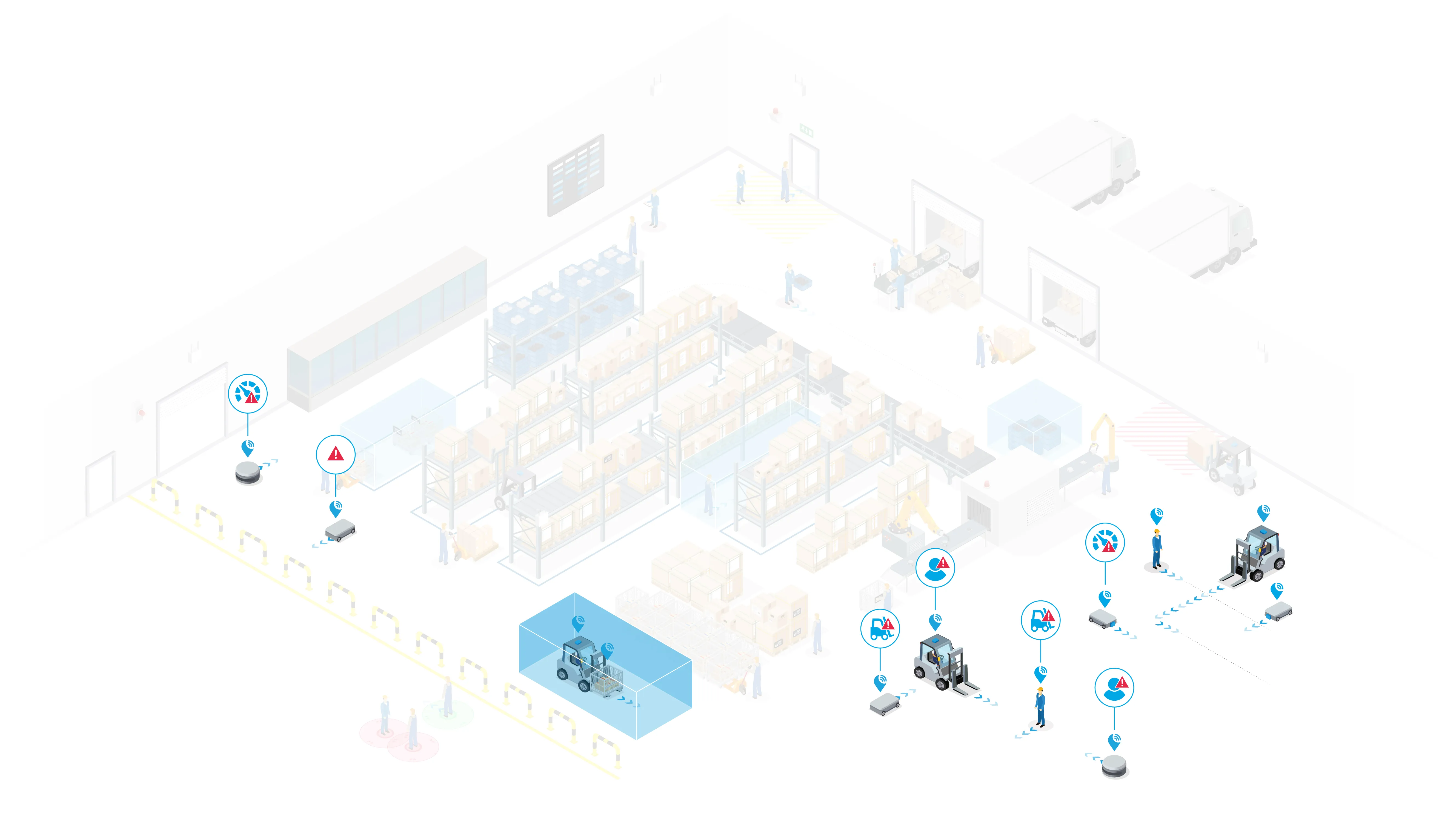Why Now Is the Time to Automate Your Intralogistics with Connected Mobile Robots and Centralized Fleet Management
Manual transport control in intralogistics is inefficient and risky. Automating systems reduces errors and boosts efficiency. Here's why and how to start.

Manual control of transport vehicles such as forklifts, carts, etc. is still common practice in intralogistics. However, as the number of moving units on the shop floor grows, this traditional approach reaches its limits. The effort and risk associated with human failure rises, as does the need for automation. Here's why businesses should plan to automate their transport systems and processes now and how they can get started.
TL;DR
- Manual control of transport systems in intralogistics is associated with a waste of resources, the risk of human error and low operating and response speeds.
- Forward-looking companies automate their transport systems and processes to increase efficiency and safety and continuously improve operations.
- Finding the best possible solution for automated intralogistics may require combining AMR and AGV systems from different manufacturers, centralizing control and real-time data analytics using AI.
- The KINEXON Fleet Manager enables businesses to efficiently and flexibly manage and orchestrate their mixed AMR and AGV fleets.
The Downsides of Manual Transport System Control

Non value-adding activities
For decades, manual control of forklift trucks and transport vehicles was an essential activity in intralogistics. However, the introduction of autonomous vehicles, AMR and AGV, has reduced the need for manual intervention in operations. In addition, automation has the potential to release human resources to be used for value-adding tasks. So there is almost no reason for modern businesses to waste their employees' time on manual fleet control.
Risk of human failure
Human error can be a serious challenge in manual transport systems control, especially in dense, high-speed intralogistics traffic. Even experienced operators can make mistakes that lead to accidents, downtime and damage to goods or critical infrastructure. Delays and costly repairs or maintenance work due to human failure affect the overall efficiency and safety of man and machine on the shop floor. Fleet management automation helps minimize this risk.
Low operating and response speed
Manual control scenarios are inherently slower than automated ones, as human intervention lacks the speed of advanced AMR and AGV systems. Human operators need time to perceive, process and react to new information, while automated fleets can adapt to planned and unplanned changes on the shop floor in real time, e.g. by changing routes and navigating obstacles. Scaling and optimization is also faster in automated scenarios.
Key takeaway: Manual fleet control in intralogistics is associated with a waste of resources, the risk of human error and low operating and response speeds.
Why Forward-Looking Businesses Act Now
Increase operational efficiency
Automated transport systems help forward-looking businesses to optimize vehicle and robot routing, reduce idle times and ensure consistent performance without the critical fluctuations and downtimes associated with human operation. Overall, fleet automation results in faster job execution, less wasted human resources and higher throughput, making the entire intralogistics process more streamlined and productive.
Increase safety and security
Automating fleet control significantly increases safety for humans and machines in busy environments. AMR and AGV systems equipped with advanced sensors and centrally orchestrated using modern fleet management systems can detect and avoid obstacles, reducing the risk of accidents and injuries. Goods are transported safely and accurately, minimizing the risk of loss or damage and raising overall safety standards in the workplace.
Continuous improvement of processes
Identifying and resolving inefficiencies in complex operations can be tedious and error-prone when handled manually. In automated scenarios, autonomous systems collect and analyze data to provide businesses with valuable insights into operational performance and enable real-time optimization. This continuous refinement process ensures that intralogistics keeps pace with technological progress and the competitive advantage is maintained at top level.
Key takeaway: Forward-looking companies automate their fleet management to increase operational efficiency and safety and continuously improve processes.
Learn more in our Expert-Interview: How to Orchestrate AMR and AGV Systems from Different Manufacturers
How to Orchestrate AMR and AGV Fleets

Align different systems
Finding the best possible solution for automated intralogistics may require combining AMR and AGV systems from different manufacturers. To achieve this, various proprietary solutions must be integrated into one framework that ensures seamless communication and interoperability. By standardizing protocols and interfaces, e.g. VDA 5050, the disparate units can work together, enabling smooth processes and optimizing the overall fleet performance.
Centralize AMR and AGV management
Besides interoperability, the centralization of fleet control and management is an important prerequisite for process automation. Modern systems such as the KINEXON Fleet Manager make it possible to monitor and manage all AMRs and AVGs in one place, streamlining task assignment and navigation. This unified approach simplifies monitoring and makes sure all units work as one, maximizing productivity and reducing operational complexity.
Add AI for operational data analytics
Integrating AI-powered data analytics helps to increase efficiency and safety of automated fleet management applications. AI algorithms analyze real-time data from AMRs and AGVs to detect patterns and optimize routes, for example. This data-driven, automated orchestration leads to greater response speed and efficiency while continuously refining operations to ensure that the fleet meets the increasing demands of intralogistics at all times.
Key takeaway: Orchestrating mixed fleets requires aligning systems of different types and manufacturers, centralizing control and real-time data analytics using AI.
Learn more in our whitepaper on VDA5050-Powered Fleet Management

More Resources
Stay Up to Date
Subscribe to our newsletter and stay connected. You can unsubscribe at any time.
Ready to automate your industrial operations?
Schedule a meeting with our experts to connect and automate your operations.
Get in touch